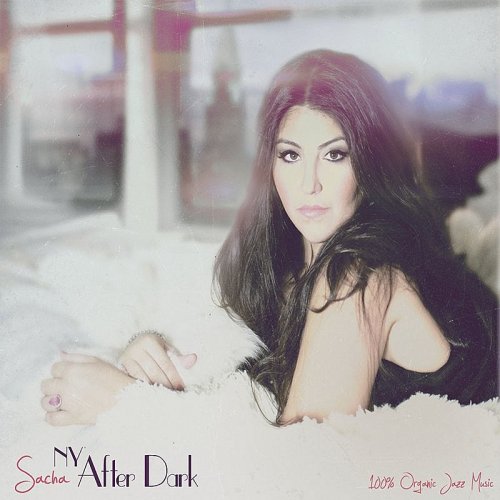Marina Tarasova, Ivan Sokolov - French Cello Sonatas, Lalo, Koechlin & Pierné, Vol. 1 (2022) [Hi-Res]

Artist: Marina Tarasova, Ivan Sokolov
Title: French Cello Sonatas, Lalo, Koechlin & Pierné, Vol. 1
Year Of Release: 2022
Label: Brilliant Classics
Genre: Classical
Quality: flac lossless (tracks) / flac 24bits - 96.0kHz
Total Time: 01:02:08
Total Size: 290 mb / 1.05 gb
WebSite: Album Preview
TracklistTitle: French Cello Sonatas, Lalo, Koechlin & Pierné, Vol. 1
Year Of Release: 2022
Label: Brilliant Classics
Genre: Classical
Quality: flac lossless (tracks) / flac 24bits - 96.0kHz
Total Time: 01:02:08
Total Size: 290 mb / 1.05 gb
WebSite: Album Preview
01. Cello Sonata in A Minor, IEL 18: I. Andante non troppo - Allegro moderato
02. Cello Sonata in A Minor, IEL 18: II. Andante
03. Cello Sonata in A Minor, IEL 18: III. Allegro
04. Cello Sonata, Op. 66: I. Très modéré
05. Cello Sonata, Op. 66: II. Très calme (Andante quasi Adagio)
06. Cello Sonata, Op. 66: III. Final. Allegro non troppo
07. Sonata en une partie in F-Sharp Minor, Op. 46
Born in Lille, Édouard Lalo (1823–1892) studied the violin before leaving home for good, against his father’s will, to enter the Paris Conservatoire. Having graduated without family support, he began to make a living in the capital as an orchestral violinist and violist and as a member of the Quatuor Armingaud (from 1855), one of many such ensembles which sprang up within a culture of chamber music that was then supported by the foundation of the Société nationale de musique. Lalo’s Cello Sonata in A minor is relatively unknown, despite its obvious beauty and clear Schumannesque qualities. As a second violinist and violist in the Armingaud he knew his way around the inner parts of much Classical and early Romantic repertoire, and this sonata benefits from such familiarity, with its bold, concertante writing for the solo instrument sometimes relegating the pianist to the status of an orchestral accompanist. The rhythmic complexity of this sonata is central: for instance, the juxtaposition of triplets with semiquavers to evoke a fluid but irregular movement, foreshadowing similar motion in the cello writing of later sonatas by Brahms, Franck and Rachmaninoff.
Charles Koechlin (1867–1950) studied composition at the Paris Conservatoire with Jules Massenet and Fauré. He moonlighted as a critic, but also produced much more substantial and influential treatises on theory, harmony and instrumentation, culminating in the monumental Traité de l’orchestration. He composed frequently, producing a huge opus of well over 200 works, and in a fluent style distinguished above all by its melodic invention, with supple and eloquent melodic themes. In that regard, the spirit of Fauré is never far away in the Cello Sonata Op.66 – allusive, imbued with a retrospective spirit which unfolds into a kind of accompanied recitative, quintessentially cellistic. Koechlin wrote the Sonata in October 1917 in a flurry of chamber-music activity, while Europe was enveloped in carnage. In the searching Andante quasi Adagio there is a
contrapuntal sophistication at work which never draws attention to itself, with chords and melodic lines crossing in distinct, unpredictable patterns.
Gabriel Pierné (1863–1937), also an alumnus of the Paris Conservatoire, was a successful musician and won the coveted Prix de Rome in 1882. Pierné became one of the most influential musicians in Paris, more at the time through his conducting than his composing. He introduced audiences at the Concerts Colonne to countless premieres of lasting significance (among them Debussy’s Ibéria, Images and Jeux, Ravel’s Une barque sur l’océan, Tzigane and the first suite from Daphnis et Chloé) and was one of the principal conductors for Diaghilev’s Ballets Russes, conducting the world premiere of Stravinsky’s Firebird. Pierné’s single-movement Cello Sonata in F sharp minor is in a cyclical form, following the example of Franck and Liszt. Each section reaches a foreshortened climax, delaying resolution until the inevitable return of the opening recitative, now in more impassioned form, before this too tails off in a sequence of expiring arabesques.





![Elmer Bernstein - Movie and TV Themes (1962) [1987] Elmer Bernstein - Movie and TV Themes (1962) [1987]](https://www.dibpic.com/uploads/posts/2025-12/1766269303_folder.jpg)
![Johnny Mathis - Sending You a Little Christmas (2013) [Hi-Res] Johnny Mathis - Sending You a Little Christmas (2013) [Hi-Res]](https://img.israbox.com/img/2025-12/23/38ptbeu2vtopjom56b48st4yc.jpg)

